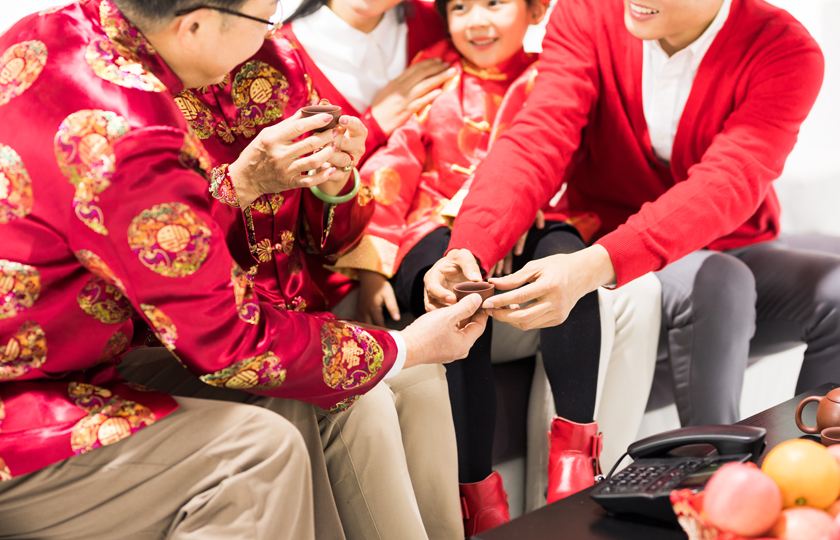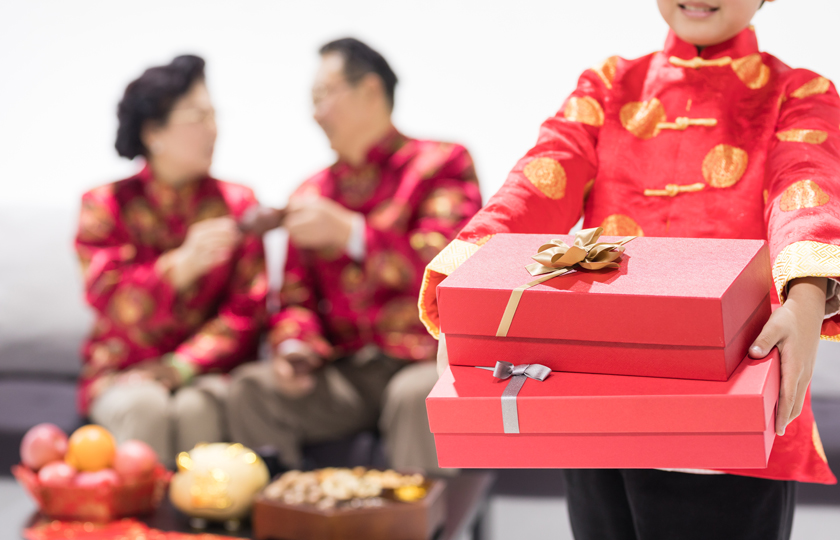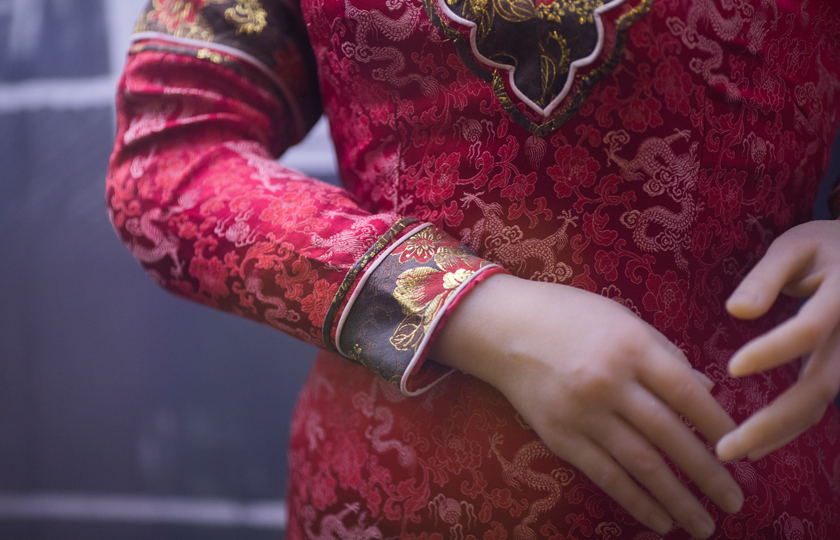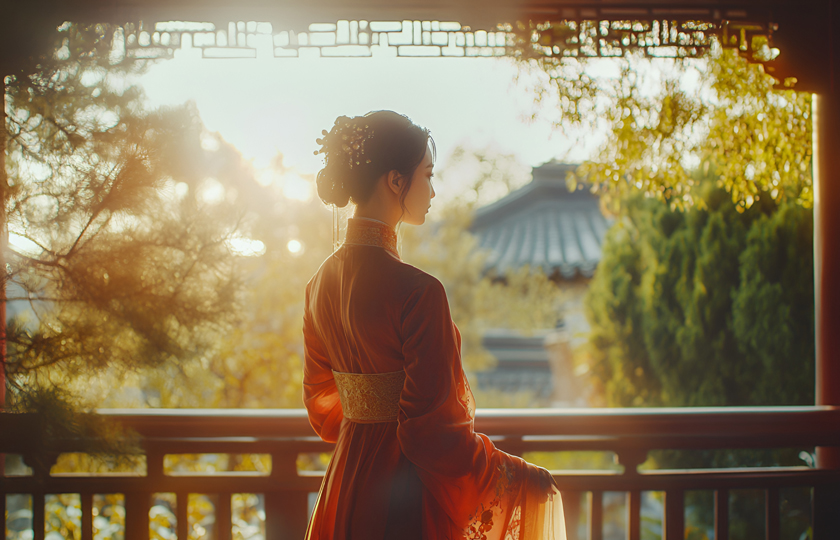Lunar New Year Clothes: What to Wear for a Festive Celebration

The Lunar New Year is just around the corner! Growing up, I was always taught that wearing new clothes for the New Year is a must—it’s believed to bring good luck and a fresh start. So today, let’s talk about the traditional custom of Lunar New Year outfits!
The origin of wearing new clothes during the Spring Festival
The origin of wearing new clothes during the Spring Festival can be traced back to ancient China. According to historical records, as early as the Southern and Northern Dynasties, there was the custom of "all elders and children dressing neatly" on the first day of the lunar new year, that is, all family members, old and young, should wear neat clothes to welcome the new year. This custom has been continued and developed in the subsequent historical periods.
The significance of wearing new clothes
Bid farewell to the old and welcome the new
The new year is a time to bid farewell to the old and welcome the new. Wearing new clothes symbolizes saying goodbye to the past and welcoming a new start. People hope to express their farewell to the past year and their beautiful expectations for the new year in this way.
Auspicious and satisfactory
New clothes are usually bright in color and novel in style, implying good luck and continuous blessings. People believe that wearing new clothes can bring good luck and blessings to themselves and make the new year more smooth and happy.
Express respect
During the Spring Festival, people will visit relatives and friends and pay New Year calls to each other. Wearing new clothes is not only respect for oneself but also respect for relatives and friends. A neat and decent appearance can leave a good impression and enhance friendship and kinship between each other.
When to wear?
According to traditional customs, people usually wear new clothes on the first day of the lunar new year.
The first day of the lunar new year marks the official start of the new year. People will put on new clothes early to welcome the first ray of sunshine in the new year, visit relatives and friends and pay New Year calls to each other. On this day, regardless of men, women, old and young, they all show the joy of the new year with new clothes.
Clothing recommendations for the Lunar New Year
There aren’t any strict rules or specific styles when it comes to what type of new clothes to wear for Lunar New Year. Almost anything trendy or fashionable works, but it’s best to avoid wearing worn-out or damaged clothing. Here are some examples of traditional attire:

Tang suit
1. Introduction
The Tang suit does not only refer to the clothing style of the Tang Dynasty. Instead, it generally refers to a Chinese-style formal dress that draws on elements of ancient Chinese Hanfu and is improved according to modern aesthetics.
Its typical features include front openings, frog fasteners, stand-up collars, etc. The colors are rich and vivid, and the patterns are mostly auspicious patterns such as dragons, phoenixes, and peonies.
2. Reasons for recommendation
Cultural inheritance: The Tang suit represents a part of Chinese traditional culture. Wearing a Tang suit can show respect and inheritance for traditional culture.
Beautiful meaning: The patterns and colors of the Tang suit imply auspiciousness, wealth, and happiness. It is suitable for wearing during the New Year to pray for good luck and smoothness in the new year.
Fashionable and versatile: The styles of Tang suits are diverse. There are both traditional long robe styles and modern improved short and casual styles, suitable for people of different occasions and age groups.

Qipao
1. Introduction
The qipao is a women's clothing full of ethnic charm in China and evolved from Manchu women's clothing.
Its characteristics are stand-up collars, right front openings, tight waists, and slits on both sides of the hem. The fabrics are mostly satin, and the edges of collars, fronts, and sleeves are trimmed with wide borders.
2. Reasons for recommendation
Show female charm: The qipao is known for its fitting cut, elegant lines, and exquisite embroidery. It can show the soft curves and elegant temperament of women.
Auspicious meaning: The qipao often has auspicious patterns such as lotuses, mandarin ducks, and bats embroidered on it, expressing people's blessings for peace, happiness, and reunion in the new year.
Suitable for various occasions: The qipao is not only suitable for wearing during the Spring Festival but also suitable for various formal occasions and special events such as weddings and banquets.

Hanfu
1. Introduction
Hanfu is the traditional national clothing of China and has a long history and profound cultural connotations.
It has various styles, including straight gowns, curved gowns, ruqun, etc., and the colors and patterns are also rich and diverse.
2. Reasons for recommendation
Inherit historical culture: Hanfu is the epitome of the clothing culture of the Chinese nation. Wearing Hanfu can make people feel the charm of traditional culture and the weight of history.
Show individuality: The styles of Hanfu are diverse and can be selected according to personal preferences and occasion needs, showing unique individuality and taste.
Suitable for the festival atmosphere: Wearing Hanfu during the Spring Festival can add to the festive atmosphere and make people more immersed in the atmosphere of traditional culture.
Colors of Lunar New Year clothing
Red
Meaning: In Chinese culture, red symbolizes festivity, auspiciousness, and enthusiasm. It is very suitable for traditional festivals like the Spring Festival. Wearing red clothing can add to the festival atmosphere and implies that the new year will be full of good luck and happiness.
Recommended occasions: Various activities during the Spring Festival, such as family gatherings and paying New Year calls.
Gold or silver
Meaning: Gold and silver represent wealth and dignity. They are also common decorative colors during the Spring Festival. These two colors can add a sense of luxury to the festival and make people look more noble and elegant.
Recommended occasions: As accessories, such as scarves, belts, shoes, or jewelry, paired with clothing of other colors.
Orange or pink
Meaning: Orange represents vitality and youth. Pink symbolizes soft, romantic, and soothing energy. These two colors can create a warm and sweet atmosphere and are suitable for family gatherings and paying New Year calls. It is said to have a peach blossom luck buff加持!
Recommended occasions: Gatherings with relatives and friends or visiting elders during the Spring Festival.
Taboos for Lunar New Year clothing
Not recommended to wear black
Black is often regarded as an unlucky color in many cultures because it is often associated with funerals and death. Therefore, during the Spring Festival, try to avoid wearing pure black clothes to avoid bringing negative energy.
Not recommended to wear white
Although white is pure and flawless, in some cultures it is also seen as related to funerals and is easily associated with mourning clothes. Therefore, pure white clothes should also be avoided during the Spring Festival.
Not recommended to wear yellow
In some places, yellow has the meaning of "failing". It may represent things not going smoothly or failure. Although yellow is also an auspicious color in some cultures, to avoid possible misunderstandings, it is best to avoid wearing pure yellow clothes during the Spring Festival.
Not recommended to wear green
Green also has similar negative meanings in some contexts and may represent unsuccessful or failed things. Therefore, green clothes should also be carefully chosen during the Spring Festival.
Not recommended to wear clothes with negative patterns
Clothes with patterns such as fierce animals, teardrops, damages, vulgarity, etc. should be avoided because they may bring unlucky meanings.
Some taboos for the Lunar New Year
1. Do not sweep the floor or splash water: The first day of the lunar new year is the birthday of the "broom". Sweeping the floor is considered to sweep away the good luck in the family. Splashing water. When the God of Wealth sees water at the door, he is reluctant to enter, which will affect wealth.
2. Do not use needles, threads or scissors: Using scissors may cut off official career and wealth, and also attract disputes. If women use needles and threads to mend clothes, they will quarrel with others all year round.
3. Do not kill living beings: The first day of the first lunar month is the first day of the new year. Killing and seeing blood are regarded as unlucky things, so generally chicken, duck, fish and meat are prepared before the first day.
4. Do not wash hair: Washing hair on the first day is regarded as washing away wealth. People think that washing hair may wash away good luck and wealth at the same time.
5. Do not lend money to others or demand debts: Borrowing money or demanding debts from others on the first day is unlucky for both parties and will affect people's mood and wealth.
6. Can't say unlucky words: The Spring Festival is a festive and auspicious great day. Unlucky words like "broken", "poor", "kill", "ghost", "lose" and so on cannot be spoken casually.
7. Avoid crying and quarreling: Keep a pleasant mood and avoid quarreling or crying to ensure family harmony.























